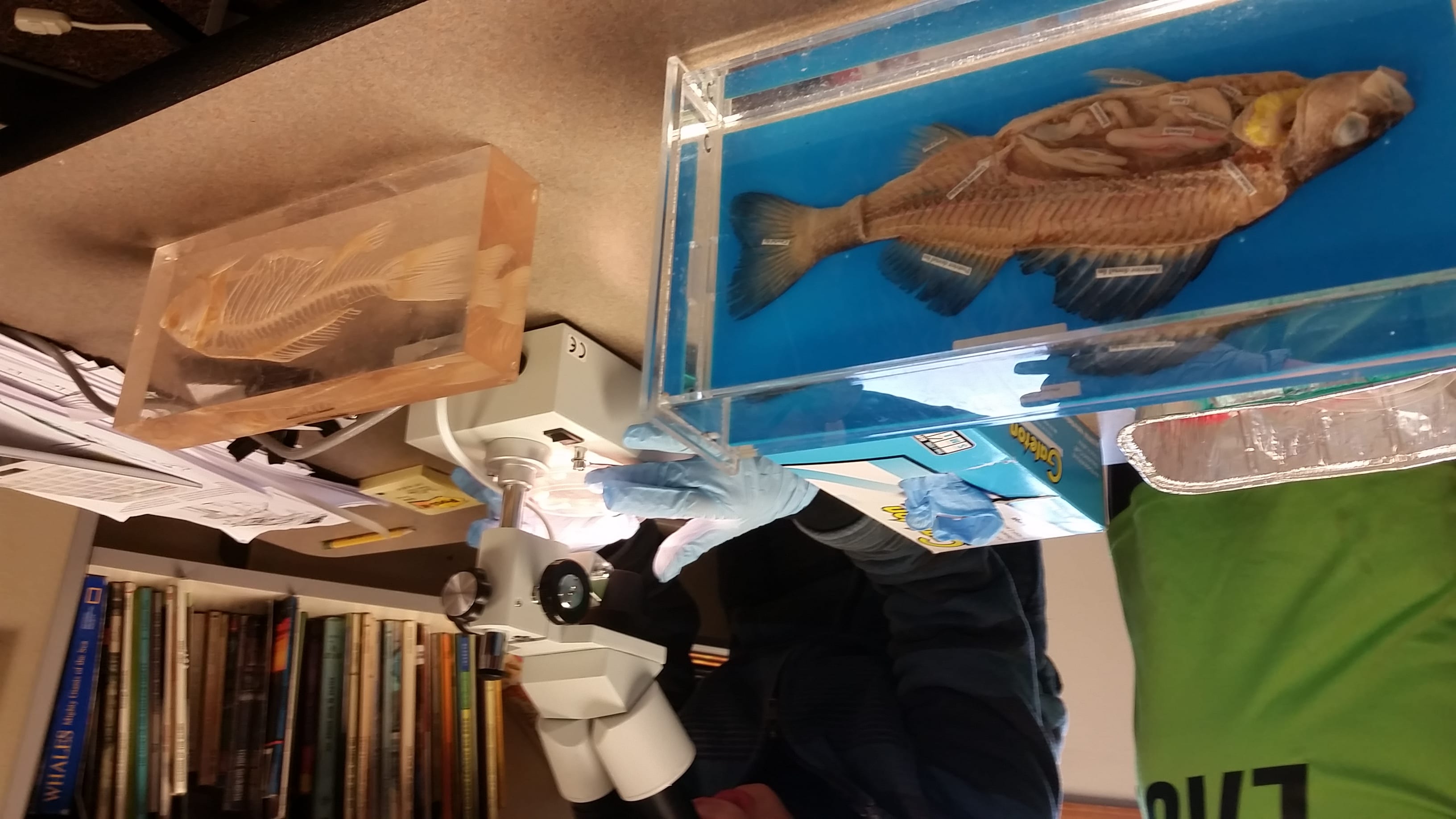Gross but AWESOME! That’s how students usually describe the fish dissections we do with the Salmon in the Classroom program! Last week we had our first dissection of 2017 with Mike Walsh’s 5th graders at Daybreak Middle in Battleground.
Students’ first challenge is to remove structures the fish uses for movement, protection, breathing, and sensing. Then we look at those structures under the microscope! Students look for EVIDENCE that will help them answer all sorts of questions: Do salmon have tastebuds? Do they have teeth? Do they have eyelids? Why or why not? Do the fins have bones? What color are the gills? Why are they shaped that way?


When the dissection shifts to focus on INTERNAL anatomy, students continue to lead the investigation. Students perform the main incision and identify all the internal organs before completing additional challenges. This is a very hands-on activity!

The first challenge is to identify the 2 chambers of the fish’s heart. Which is the tough, muscular ventricle, and which is the darker-colored atrium? Pacemaker cells can be found near the atrium. If stimulated, these pacemaker cells can make a fish’s heart beat long after it’s dead. This is a test of patience- students must do the incision carefully and correctly, not damage the heart, keep the heart inside the fish’s body, correctly identify the chambers, and gently touch the atrium without damaging it… It is a very memorable experience for those students who see a beating heart.

Salmonid dissections are a full-sensory experience, which you can see from these reflections from Mike’s class. Acting like scientists during this type of sensory experience is good practice for this age group 🙂



